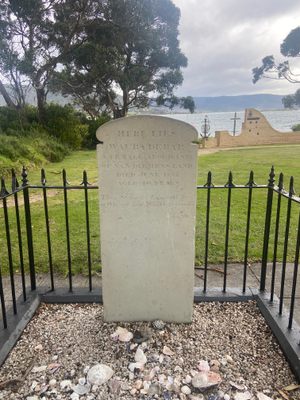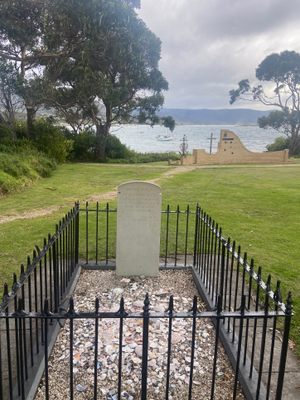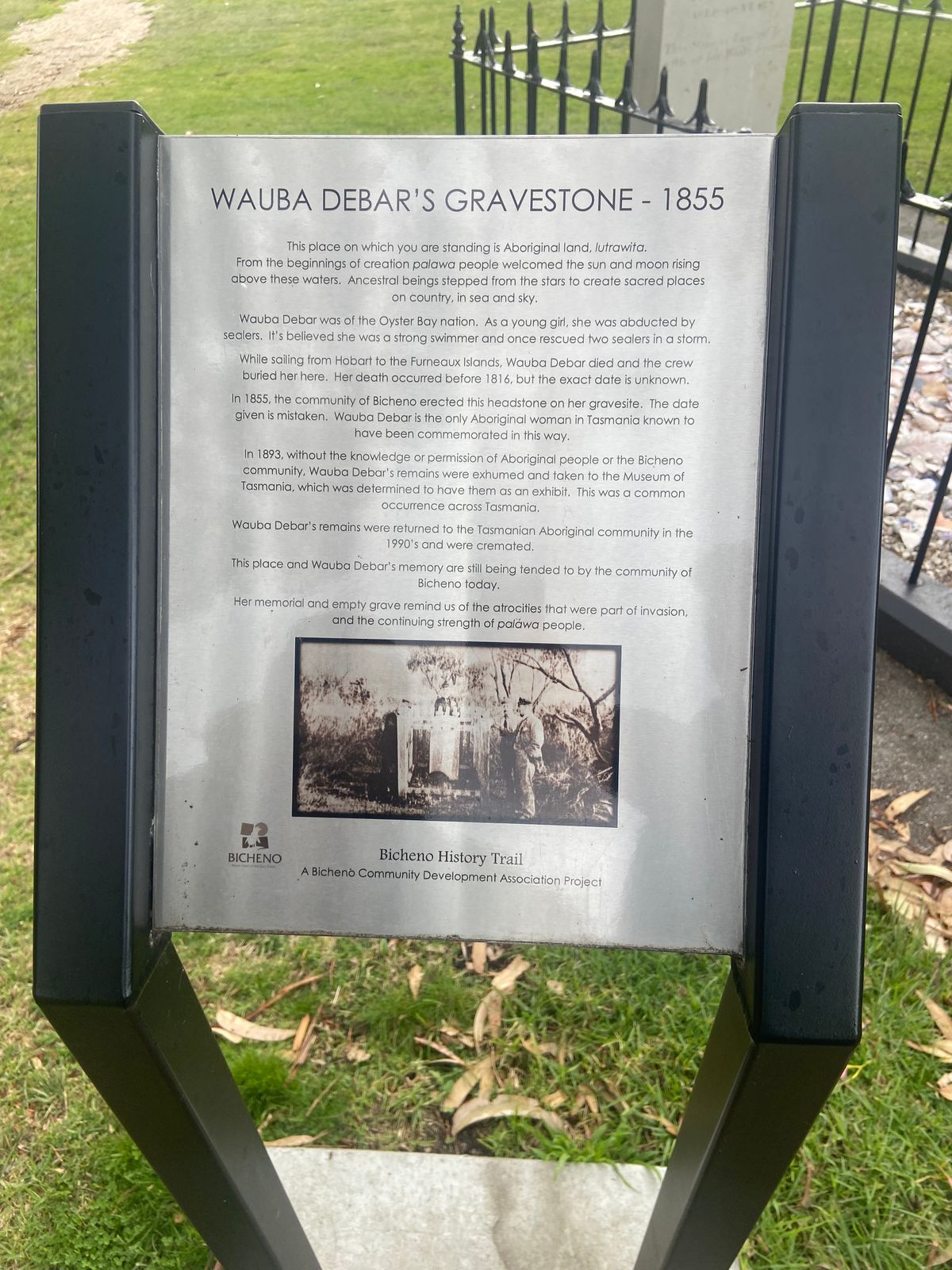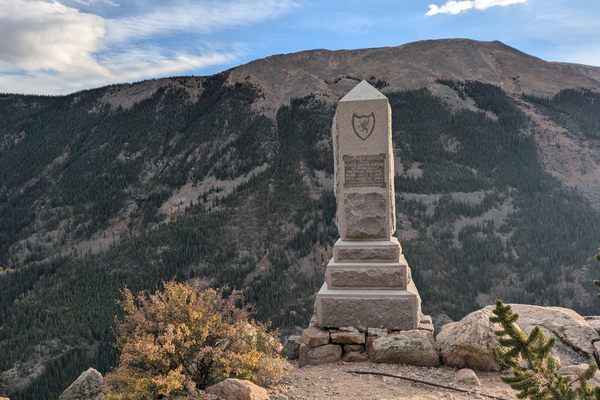About
Wauba Debar is an Aboriginal Tasmanian and her grave tells a story of both tragedy and heroism. Born in 1792, she belonged to the Paradererme tribe of Oyster's Bay and was kidnapped from her family and enslaved by whalers and sealers who had began the European colonization of the island of Tasmania. Known for her strength and superior swimming ability, she was noted in historic records for saving the lives of two men who were struggling at sea off the coast of Bicheno.
She tragically lost her life as part of a sealer hunting party in June 1832 and this grave commemorates her story. The inscription on the stone reads: "Here lies Wauba Debar. A Female Aborigine of Van Diemen’s Land. Died June 1832. Aged 40 Years. This Stone is Erected by a few of her white friends."
The site is one of great historic and cultural significance and is listed on the Tasmanian Heritage. The site is unique as it is the only gravestone erected for a Tasmanian Aboriginal person during the 19th century.
The story of loss does not end with her burial. The subsequent European demand for scientific research into Aboriginal life in the late 1800s meant that in 1893, the Tasmanian Museum and Art Gallery led an operation to exhume the grave and display Wauba's remains in a box in the city of Hobart. This led to outrage among the Tasmanian local people, as it was done without the knowledge and permission of the Aboriginal community. The public view was summed up in the following quote from an editorial in the Tasmanian Mail, which called the action "a pure case of body snatching for the purposes of gain, and nothing else.”
In 1990, Wauba Debar's remains were returned to the Tasmanian Aboriginal community, where they were subsequently cremated. The memorial and empty grave look over Waubs Bay and this poignant site pays tribute and tells her story.
Related Tags
Know Before You Go
There is a small area of parking at the grave site.
Published
September 30, 2022








































